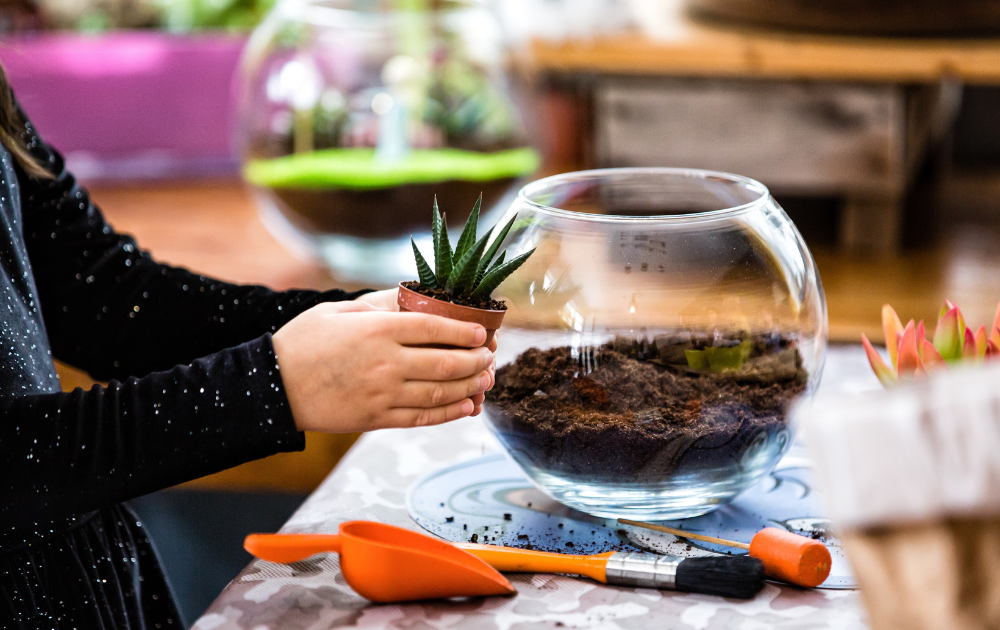
15 Feb How To Build A Terrarium: Follow These Steps To Create A Mini Indoor Green Space
Terrariums are often referred to as indoor gardens, and the nickname is an apt one. They are particularly suitable for small homes with little or no backyard green space, whose area may be taken up with outdoor seating for barbecues, or a sandbox for children to play in during the summer. They are particularly well-suited to apartment and condo living, where access to the outdoors is usually restricted to a communal rooftop terrace or no garden area at all.
But the great outdoors can be brought inside in the form of a terrarium, and building one is a great way to introduce your child to the wonders of plants, soil, and other components of gardens.
In this post, we offer step-by-step instructions for building your own terrarium. It’s the perfect project for doing with your child, perhaps when they have a science project due at school and are wondering what topic to undertake. Terrariums can be large or small and work in almost any indoor space.
1. Find a glass container – a big candy or cookie jar or something similar.
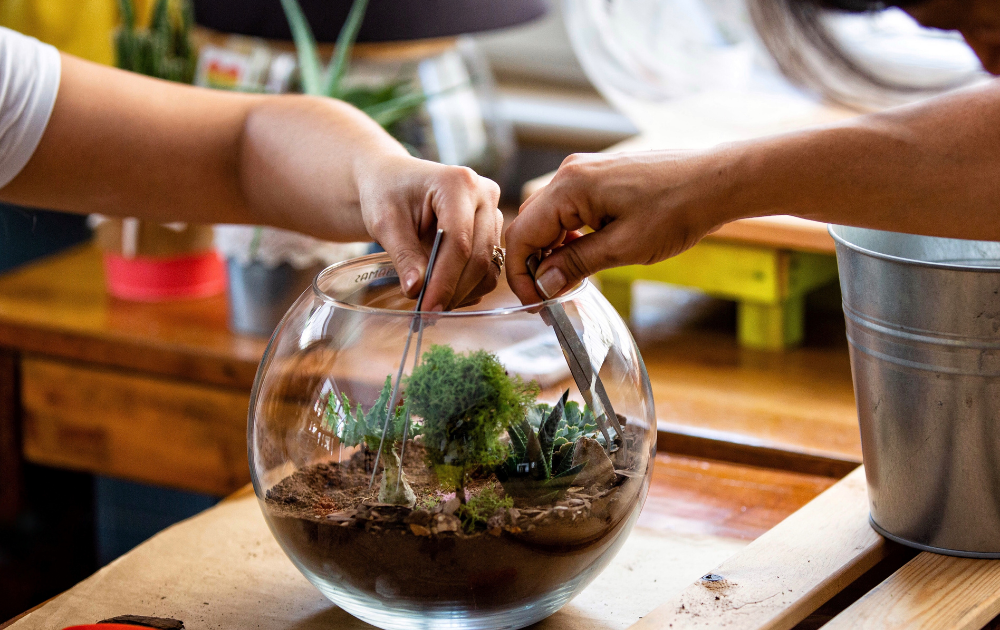
Depending on how much living space you have, a square container, or a rectangular one, is ideal for a terrarium. But smaller containers work just as well. It should have a snug fitting lid. (Some terrariums are open to the air, but keep in mind that they require more watering). You can also buy terrariums as a kit, with all the tools you need for planting and caring for it, either at gardening stores or online at Amazon.
2. Line the bottom with small pebbles to start.

Pebbles help with drainage, and you can buy pretty ones in various colors at arts and crafts shops or even at some dollar stores. Then add a layer of charcoal, which helps absorb moisture, as well as odors and bacteria.
3. Add a layer of soil.

Don’t use rich, dark soil – choose a light potting mix. What works in an outdoor garden is not necessarily right for a terrarium. Make it deep enough (about 3 – 4 inches) so that the roots of your plants will easily take to it.
4. Begin planting your plants.
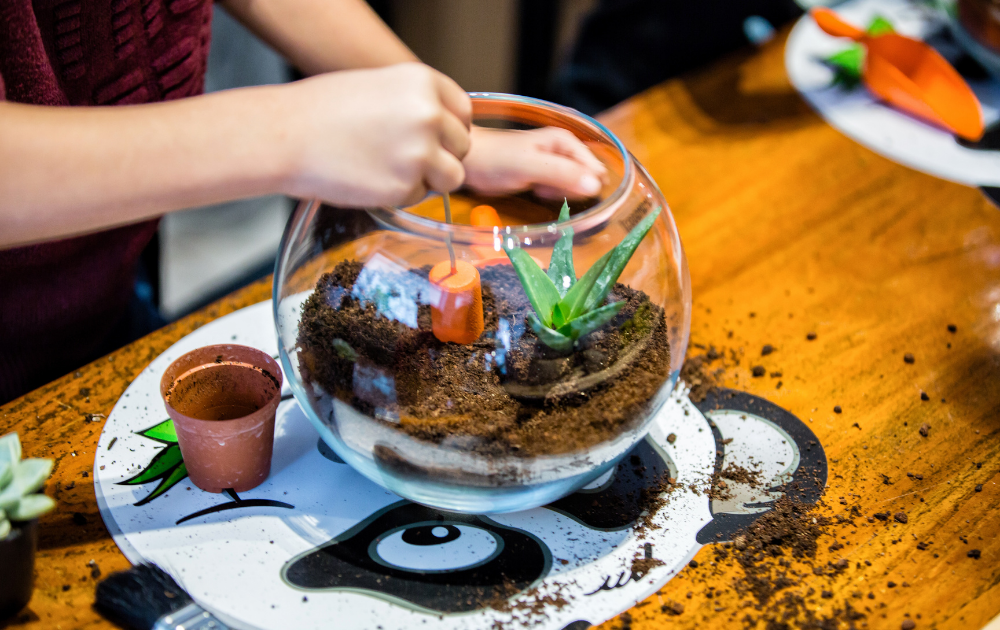
When choosing plants for the terrarium, look for ones that thrive in low light levels, don’t need much water, and don’t grow too rapidly. Mosses, cacti, and some ferns make ideal plants for terrariums.
5. Add a little garden decor.

Depending on how much room you have, add some touches that make your terrarium look attractive – you can even do a theme, like a fairy garden, a park, or a farmhouse, with small sheep or other animals in the yard. Add toadstools, a wee bench, and a little fencing made of popsicle sticks. Children love making these accessories, and what you can’t make yourselves you’ll find on gardening store websites or at hobby stores. There is really no limit to how creative you can get with your terrarium – only space restricts how many items you can put near the plants.
6. Where to place it.
Terrariums do best when they are out of direct sunlight, so consider a corner table between two walls, or on a bookcase in the family room. As long as it’s not getting direct light or heat, your indoor garden should thrive.
7. Remember to clean it regularly.
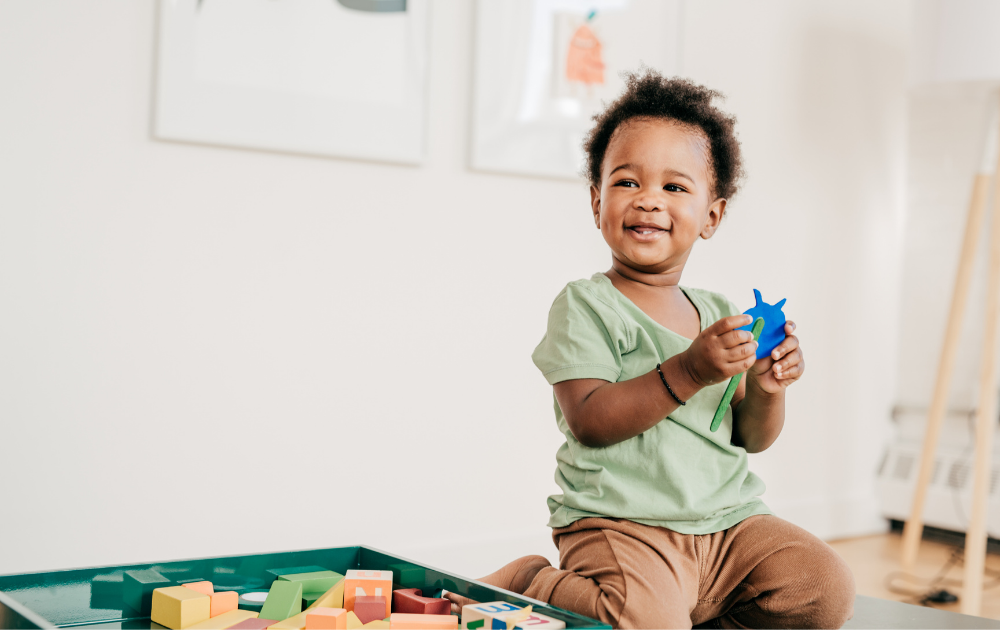
Terrariums are low maintenance, and that’s part of their appeal. However, you should clean it outside and in, removing any wilting or dying leaves or sections of moss that have been browned. Cleaning it two or three times per month will keep your plants healthy and strong.
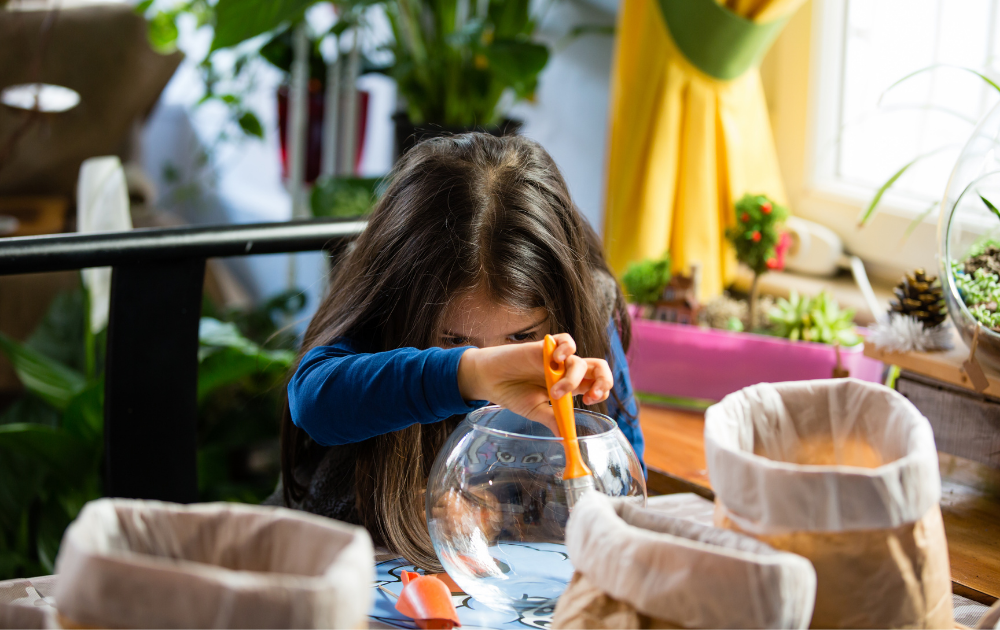
8. Open the lid occasionally.
Because it’s self-contained and therefore self-moisturizing, so to speak, you don’t need to remove the lid daily to pour water on the plants. However, they do need a boost of fresh air once in a while. Take the lid off every 10 days or so, and leave it off for about half the day. Check the dampness, and if there is no moisture at all, it’s fine to pour a very small amount of water into the soil. Removing the lid temporarily allows oxygen to nourish the plants, and this gives you a chance to remove any dust that may have collected on the toadstools, fences, and other decor.
Building a terrarium is a satisfying way to bring a little nature into your home, and they are especially welcome if you don’t have ready access to a backyard. They offer a great opportunity for creating a living, mini-world of greenery, and making one is a terrific project to undertake with your child. And you don’t have to limit yourself to just one. If your little one enjoys creating a terrarium, why not make one just for their bedroom? Building one with your child is educational, but mostly, it’s just plain fun!